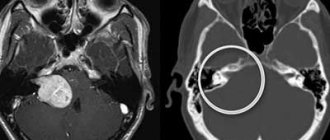Identifying and understanding the mechanisms of neurotic behavior is a necessary step in the treatment of constant fear and panic attacks. Such mechanisms support your not entirely adequate reactions and drive you into the trap of neurotic experiences.
Among the standard mechanisms, the most common is avoidance behavior. Experiencing anxiety with numerous uncomfortable experiences is not pleasant, and people begin to avoid situations that are associated with unpleasant experiences.
Let me give you a few typical examples. For example, a person has social fears (social phobia or fear of contact with people): he does not like to be in the center of attention, participate in public speaking, conflicts, avoids people and situations where he may not be on his best, informal contacts, and so on. That is, he avoids any contact where he is not guaranteed a good attitude. Another example: a person, in order to feel calm/avoid problems, wants to be able to “leave”/stop the situation. These people may begin to avoid traveling in the subway, in the elevator, flying on an airplane, large crowds of people, meetings, visits to dentists, and hairdressers.
As you noticed, the situations/“scenery” for panic attacks are different. Despite this, an anxious arousal unfolds in the human body and his psyche, always the same , which can differ in intensity, and the consciousness is simply filled with different “horror stories” (I will die/faint/go crazy/lose control/disgrace myself). That is, the “scenery” is not important, the central figure of this drama is unnecessary anxiety. And avoidant behavior does not allow the psyche to reboot and stop activating the alarm program (fight or flight reaction). Avoiding is bad, everyone knows this, but it’s easy to say “what’s there to be afraid of, pull yourself together, how can you be afraid of fear, let’s fight with each other...”, this is what those who have never experienced a panic attack say. But notice, it’s not so cheerfully that we run to report to our bosses or approach the person of the opposite sex we like. And these experiences are essentially the same as a panic attack, but incomparable in strength.
Treatment of phobias and fears: which methods are useful and which are harmful
So, avoidant behavior is harmful, neurosis will only grow. But if you simply expose your psyche to the “scenery” where you are anxious, and wait until everything passes, then, firstly, this is not pleasant, and secondly, you will probably not be able to meet the necessary conditions for the psyche to be overloaded. The anxiety state should go away (or greatly decrease) in the situation in which it began. This is one of the necessary conditions.
Without this, at best, there will be less fear, but you will still be tense and anxious. Therefore, it is important that you calm yourself down correctly, for example, with relaxation techniques, correct explanations to yourself of the nature of the attack and its consequences...
Incorrect/harmful ways to stop anxiety include :
- trying to avoid the situation
- turning to medication or seeking help from loved ones and doctors (trying to make sure everything is okay, for example, in case of panic, measuring blood pressure),
- for social fears - attempts to make sure (by assessing the reaction to your behavior) that the attitude towards you has not changed.
The tactic of “being in an alarming situation” can be implemented in two ways. Gradually immersing yourself in more and more alarming circumstances (if you are afraid of being far from home, you need to gradually, from day to day, increase the distance; if you are afraid of flying, first learn to calmly watch videos of airplane flights, then go to the airport, and then already flying).
From our point of view, such a tactic of gradually immersing oneself (desensitization) loses the second, when a person goes straight into an alarming situation. This way you can retrain your psyche much faster, because the main thing is to be able to cope with fear, stop being afraid of it and avoid it. If you do not face these experiences during therapy, then important experiences will not appear. But remember, you have to have the tools/techniques to help yourself through the situation and not just try to calm yourself down by willpower. Techniques and methods can be combined, the main thing is that it is comfortable and effective.
So, let's say you've worked through your fears and the mechanisms that support them (avoidance is just one of them). If you have what are called simple phobias (when there is only one situation or object that causes fear, for example, fear of riding in an elevator, in a car, flying on an airplane), then it is quite possible that the techniques described above will be enough to make more of these Don't be afraid of situations.
Causes of obsessive thoughts
It is difficult to establish exactly the nature of the occurrence of alien anxious thoughts. This is most associated with the underlying disease. May also affect:
- heredity;
- hormonal imbalance, due to which there is a dysfunction of the brain;
- psychological trauma;
- severe stress;
- sensitive temperament;
- pregnancy;
- disability;
- the presence of protracted infectious diseases.
A qualified psychiatrist can determine the causes of obsessive thoughts. Required:
- personal consultation;
- conducting experiments to see the overall clinical picture;
- interviewing the patient's relatives;
- observing his behavior;
- use of a neurophysiological test system and neurotest;
- carrying out laboratory tests.
Treatment of obsessions is carried out in conjunction with the underlying disease. Depending on the patient’s condition, it can be performed in a hospital or in an outpatient setting.
Treatment of fears: when to contact a specialist
If you have a full-fledged neurosis, in order to stop anxiety states, you will also need to work with the background.
That is, it is important to optimize your relationships with yourself, with people, and your lifestyle, in order to eliminate the mechanisms that generate your body and psyche being in a state of chronic stress. Otherwise, fears will continue to catch up with you. Imagine a pot of water on a burner that is turned on. To stop the water from boiling, you need to turn off the gas. Otherwise, you will have to endlessly add cold water (do relaxation exercises, meditate, convince yourself that everything is fine and nothing bad will happen, take sedatives...) and open the lid slightly (do physical exercise) to let off the steam.
From the point of view of psychotherapy, this is the most intellectually interesting part of the work for a psychotherapist, because people are all different, their situations are different, and there is a huge field for creativity. It would probably be better for people if everything was standard. Then, with the help of algorithms from specialists, they would be able to independently cope with their fears and anxious experiences.
Drug treatment for neuroses is justified if anxiety states significantly interfere with normal (as before neurosis) functioning.
Mostly drugs are used that remove fear/anxiety at the moment of their appearance, that is, to relieve them. These are tranquilizers (Relanium, phenazepam, Xanax, Atarax) or much weaker drugs (Corvalol, Novopassit, Afobazole, Persen). We rarely prescribe the latter due to their low effectiveness in cases of panic. But for mild anxiety states they may be quite appropriate.
The second group, which is used in the treatment of fears, is antidepressants. They reduce anxiety, stabilize the autonomic nervous system and thereby reduce the likelihood of severe attacks. Unfortunately, medications can only reduce symptoms, nothing more. But, sometimes, this is also very necessary in order to quickly bring a person “into service.”
Anxiety and fear among people? Treatment can be supplemented with the following recommendations:
- Exercise at least 3 times a week for 45 minutes. Physical activity helps relieve background stress.
- Optimize your work and rest schedule.
- Don't drink alcohol or at least reduce the amount. Everyone knows how, after alcoholism, a state of panic can set in in the morning.
- Try to reduce the amount of stress in your life.
You can get rid of neurosis and start living as before. One patient once said: she used to think that she wouldn’t wish an enemy to go through what she went through. But now I’m even glad that I was able to cope with neurosis, since her life has become much better and more fulfilling. I don’t think that neurosis is given to a person for something or for something, but it can definitely be used to optimize your life. Although, of course, it would be better not to exist.
Treatment of obsessive thoughts
The Salvation Clinic treats obsessive thoughts using progressive techniques and proven pharmacotherapy. Our staff includes highly qualified psychologists and psychotherapists who have experience and the opportunity to travel to various international conferences. The clinic provides decent conditions for keeping patients, nutritious food, and leisure. The patients do not need anything. It is possible to install an individual nursing station and rent a VIP room. The clinic has specialized security. No one will be able to enter or leave unnoticed. We strive to alleviate the condition of our patients and bring recovery closer. Contacting our center will improve the patient’s quality of life and provide the opportunity for a full-fledged existence.
Patients are treated individually. The program is developed on the basis of long-term observations of the patient’s behavior, his state of health, tests, taking into account age. The greatest effect of treatment is achieved with a combination of psychotherapy and drug therapy. Medicines (tranquilizers, antidepressants and antipsychotics) allow you to:
- correct neurotic symptoms;
- remove anxiety and fears;
- control mood and behavior.
Psychotherapy is an integral part of treating obsessive thoughts. Through individual counseling you can:
- understand the nature of the occurrence of deviations;
- eliminate the cause that led to the disease;
- eliminate fears and anxieties;
- develop stress resistance and self-confidence;
- eliminate depressive moods;
- teach how to manage symptoms;
- help a person socialize.
In their practice, our center’s specialists use the following approaches:
- Cognitive behavioral therapy. Based on the theory of behaviorism and the cognitive approach. The latter implies that deviations in mental development are provoked by illogical thinking and incorrect beliefs of the individual, by eliminating which it will be possible to get rid of obsessive thoughts and anxieties. Adherents of behaviorism recognize that the main influence on the mental development of an individual and his behavior is exerted by genetic predisposition, but they also attach important importance to environmental factors. By eliminating support for undesirable behaviors and encouraging desirable ones, a person's habits and lifestyle can be changed.
- Hypno-suggestive techniques. Verbal and non-verbal influence is made on the consciousness of the individual in order to introduce the necessary attitudes and programs. During the session, control is removed, attention is reduced, and the opportunity to program consciousness opens up. As a result of hypnosis treatment, motivation to action, changes in state and behavior are produced. The suggestive instructions given by the doctor penetrate deeply into the patient’s subconscious, which ensures positive dynamics of treatment. When using hypno-suggestive methods, depression, neurosis, phobias, alcoholism, smoking, drug addiction are successfully treated, and obsessions are eliminated.
- Autotraining. Allows you to restore the function of self-regulation impaired due to stress. The method is based on the use of self-hypnosis, self-education, and muscle relaxation. The advantage of auto-training is the involvement of the patient in the treatment process. There are two stages of training: higher and lower. At the initial stage, relaxation exercises, training of the cardiovascular system, and training in the principles of proper breathing are performed. As a result of treatment, the patient’s general well-being, blood supply to the brain and internal organs improves, the heartbeat normalizes, and headaches are relieved. At the highest stage, training is carried out to induce certain complex experiences by introducing the patient into trance states of varying depth and intensity.
We guarantee the correct diagnosis and improvement of the patient’s condition. The treatment regimen for obsessive thoughts is developed collectively. We focus on the complete elimination of symptoms and a return to an independent active life without worries and restrictions.
How to get rid of obsessive thoughts in your head
Obsessions are a real reason to visit a doctor. Only with the help of a specialist will it be possible to eliminate inappropriate ideas. You should not try to find a way to improve your well-being on your own. Self-medication can lead to worsening of the condition, progression of the disease, dependence on drugs and alcohol, in which the patient seeks solace. However, they only aggravate the situation, as they can cause delusions and hallucinations.
Heart-to-heart conversations help with obsessions. Relatives and people with similar problems will understand better. It may be advisable to sign up for group psychotherapy. However, even the closest people are not always ready to listen. Optimally, contact a good psychiatrist. In addition, you must:
- understand your desires;
- do not forget about self-control;
- adhere to the treatment regimen;
- learn more about your condition;
- accept the problem;
- realize the need for treatment;
- get enough sleep;
- adhere to the rules of good nutrition;
- give up alcohol and other psychoactive substances;
- lead an active lifestyle;
- avoid nervous fatigue and anxiety;
- be distracted by relaxing with family and friends, building a career;
- there is no need to allow obsession to interfere with a full existence.
Our clinic specialists are ready to listen to you right now. We provide on-site consultations and guarantee complete confidentiality. Highly qualified doctors will be able to correctly diagnose and offer an effective solution to eliminate the problem.
Depression with obsessive thoughts
The disorder can lead to depression. A person is constantly in a depressed mood and loses the ability to rejoice. There are other symptoms of the disease:
- low self-esteem;
- loss of interest in life;
- impaired concentration;
- obsessive feelings of guilt;
- bad attitude;
- disturbance of sleep and wakefulness;
- refusal to eat;
- thoughts of suicide;
- tendency to use alcohol and drugs;
Depression is one of the more common mental disorders. Recent advances in the field of pharmacotherapy and psychiatry make it possible to achieve complete recovery in 96.7% of cases.
Signs of a phobia
A person suffering from a phobia can quite normally lead a normal life, without standing out from others. The disease may in no way affect mental activity, family life and career growth. All problems in this case begin at the moment of contact with a phobic stimulus, the cause of the phobia. In this case, a person instantly loses control over himself, and fear does not respond to any influence of rational thinking and logic. The main signs of phobias:
- - chills;
- - sweating of the extremities;
- - tachycardia (rapid heartbeat);
- - suffocation;
- - darkening of the eyes;
- - state of horror.
Contact a specialist
Sign up for a consultation tel. 242-82-65
Make an appointment
Yuri Lvovich Muchnik
Psychiatrist-narcologist
Doctor of the highest category. 35 years of experience. Works at the Clinic named after. prof. F.F. Preobrazhensky since 2001
VSD and obsessive thoughts
Against the background of symptoms of vegetative-vascular dystonia, obsessions can arise out of the blue. The person panics and feels helpless. “Sticky” thoughts are primarily associated with deteriorating health. The patient may be bothered by sharp pain in a specific organ, which quickly passes. There is rapid fatigue, apathy, a feeling of lack of air, heaviness in the heart area. All fears associated with fear for health come down to thanatophobia. This is the fear of death. Because of this, the nervous system is in constant tension, the situation gets worse. A sick imagination can also paint pictures of the death of loved ones. When you are forbidden not to think about such things, a person plunges even more into the abyss of his phobia. Presents a variety of colorful variations. Relatives must take the patient’s complaints seriously, otherwise the gap between them will only grow.
The concept of phobia - how to distinguish a phobia from other anxiety disorders
A phobia is essentially a hypertrophied, excessive fear. The signs of a phobia are quite distinguishable. To understand the difference between a phobia and ordinary fear, it is important to evaluate the phobic stimulus (what exactly the person is afraid of). If it is ordinary fear, the person usually does not spend much time thinking about its cause, fear arises mainly during an actual encounter with a frightening object (for example, when a person is actually lifted to a height), can be controlled and does not interfere with the implementation of plans to a significant extent. In the case of a phobia, fear will occupy a person’s thoughts for a longer time, signs of a phobia will appear in the absence of a phobic stimulus (cause) and, of course, will affect the person’s quality of life.
Obsessive thoughts in neurosis
Such a diagnosis can be made when a person has been tormented for a long time by “sticky” thoughts and urges to realize them, feelings of fear and anxiety. Obsessive ideas and actions are observed to be hyperbolic and unrealistic. All this leads to suffering and other mental disorders, including alcohol and drug addiction.
The “obsessed” person constantly thinks that he can become infected with an incurable disease or get dirty. A sick imagination pushes him to perform certain daily rituals. In their absence, a person is sure that something bad will happen. Over time, the situation only gets worse. Rituals are performed with greater intensity and fanaticism. A person cannot leave the house until he has checked several times whether all electrical and gas appliances are turned off and whether all the windows are closed. With obsessive-thought neurosis, other phobias may also arise. For example, fear of one’s death and loved ones, fear of spiders and snakes, fear of the dark, fear of betrayal by a sexual partner.
At first, a person does not give in to much panic at the provocations of fantasies that forcibly invade the consciousness. Then be ashamed of your behavior and attitude towards life. Some patients simply do not know where they can get help. It may take 7-10 years from the time the disease develops until you see a doctor.
You should not delay contacting a specialist if something is bothering you or your relative and preventing you from concentrating on a normal life. Sometimes you just need to talk it out. Seeing a psychologist is a normal practice in the West. Perhaps there is no significant problem. It’s better to play it safe and find out the opinion of a specialist than to drive yourself into the abyss of your fears, depressive moods, or be led by inappropriate thoughts. Contact us, we can listen to you right now and help you cope with stress and anxiety!










